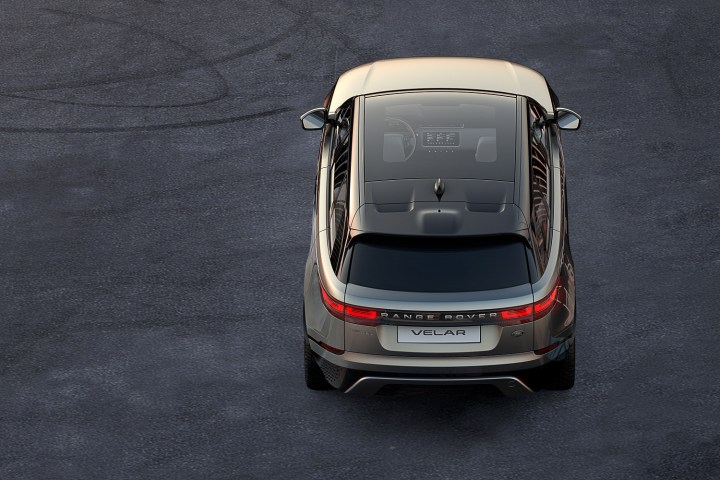
The only official image of the Velar shows its rear end. We can tell that it borrows styling cues from recent additions to the Land Rover lineup like the brand-new Discovery, but its overall design looks markedly more fluid than that of the aforementioned Evoque. While additional details — including what’s under the hood — are few and far between, the Velar is shaping up to be Land Rover’s most road-focused model yet.
The fourth member of the Range Rover lineup puts a big focus on tech. A look through the panoramic sunroof reveals a wide touchscreen neatly embedded into the dashboard, thin air vents framed by an elegant strip of chrome trim, and a color screen in the instrument cluster.
“We call the Velar the avant-garde Range Rover. It brings a new dimension of glamour, modernity, and elegance to the brand. The Range Rover Velar changes everything,” promised Land Rover design boss Gerry McGovern.
Aimed right at the Porsche Macan, the Land Rover Velar will be introduced online on March 1, and we’ll see it in the metal for the first time less than a week later during this year’s Geneva Auto Show. The first examples will arrive in showrooms in time for the 2018 model year.
What’s in a name?
The Velar will take Land Rover into a segment it’s never competed in before, but its name is deeply rooted in the company’s history. In 1969, development engineers began testing pre-production prototypes of the original Range Rover. The first 26 test mules were driven out on the open road without any camouflage, so the “Range Rover” lettering on the hood was replaced by the made-up name “Velar” to fool onlookers.
The company explains the name “Velar” is derived from the Latin word “velare,” which means to veil or to cover. Of course, the moniker was dropped when production of the first Range Rover started in 1970.



